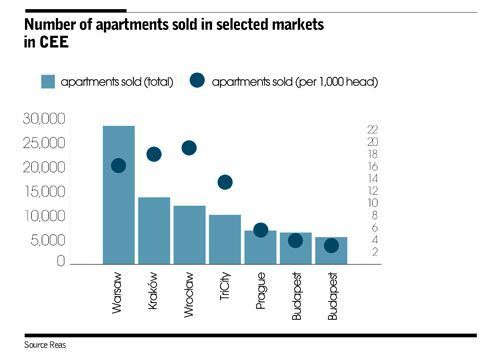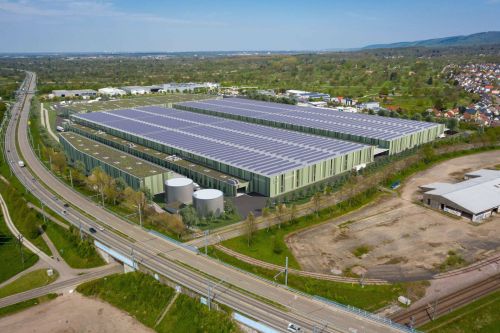Europe playing catch up with Warsaw
Residential
“With the booming Polish economy, rising salaries, low interest rates and the resulting high availability of loans as well as the attractiveness of investing in properties for rent, developers sold 28,000 apartments in Warsaw alone in 2017,” says Paweł Sztejter, the managing partner at REAS. “Sales in Kraków came to almost 14,000 and in Wrocław they came to over 12,000. Such a high number of transactions on the primary residential market is an unprecedented phenomenon throughout Europe. Sales on Polish markets are even five times higher than in other large centres of the region,” he adds.
Poland ahead by miles
In Warsaw, over 16 apartments per 1,000 inhabitants were sold last year, in Kraków this figure was 18 while Wrocław was the most active market with nearly 19 transactions per 1,000 inhabitants on the primary market. In Bucharest, where the population exceeds 2.1 mln, developers sold less than 6,000 housing units in 2016, or less than 3 apartments per 1,000 inhabitants, while about 6,500 apartments (app. 3.8 apartments per 1,000 inhabitants) were sold in 2016 in Budapest, which is a city with a similar population to Warsaw. “We have seen a clear disproportion between demand and-supply. The demand in Romania was stimulated by the Prima Casa first home programme. In Hungary, VAT on apartments was reduced from 27 pct to 5 pct, while one of the key factors behind the rising demand in the Czech Republic was the very low interest rates, which nonetheless increased sharply in the second half of 2017,” says Paweł Sztejter. “On top of all this, developers operating on these markets face serious constraints that mainly result from the difficulties of obtaining building permits. As a result there is significantly more demand than supply and we have seen significant increases in housing prices on all these markets,” he adds.
Costs now set to rise
In comparison, the Polish residential market remained extremely stable and the increases in housing prices have only been slight in recent years, since supply and demand have remained balanced over the long term. Although in the second half of 2017 prices clearly began increasing, this was offset by a rise in purchasing power, as a result of rising salaries. Rea predicts that in the near future Polish developers will face difficulties in purchasing more expensive construction sites, as well as rising construction and financing costs and a slight decrease in the number of transactions will be accompanied by a sharp increase in housing prices. Nonetheless, the number of transactions will remain very high and Polish cities will remain the clear leaders of the residential market in Central and Eastern Europe.






















































